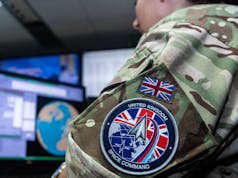Cobham Aerospace Connectivity have announced that they has been awarded a contract by the MoD’s Defence Equipment and Support to research Advanced Anti-Jam techniques for the protection of navigation signals received from the Global Navigation Satellite Systems.
The contract will see Cobham conduct research to develop means to provide assured and resilient Position Navigation and Timing (PNT) information derived from the GNSS multi-constellation.
According to the firm:
“Cobham was best placed to address the UK MOD’s needs through its extensive background in advanced antenna technology and sophisticated signal processing capabilities. The research is set against a backdrop of increasing reliance on GNSS navigation signals in the nation’s critical infrastructure and national security and the frequent interruptions of the signals either accidentally or intentionally. The more sophisticated interruptions involve the falsification of the navigation signal information for nefarious reasons such as piracy, civil disruption and military advantage.
The DE&S-backed research feeds into the company’s goal of taking already developed Anti Jam capability and developing a miniaturized system capable of providing advanced means of protection of the navigation signals received from the GNSS multi-constellation network. The anti-jam system will combine the use of advanced Controlled Radiation Pattern Array (CRPA) antenna technology with intelligent digital signal processing techniques not only to ensure reliable and assured navigation information, but also to derive important signal intelligence and domain awareness information regarding the source and nature of the interference and the best means of mitigation.”
Neil Tomlinson, Vice President Sales and Business Development at Cobham Aerospace Connectivity commented:
“This contract award recognises Cobham’s status as a major UK provider of anti-jam systems as well as our long history and deep experience in the areas of navigation antennas and satellite connectivity. We look forward to working with DE&S in this initial phase and subsequent work on this exciting project.”












Anti jam signal…….does this mean we all have to wrap our conserves and marmalade in aluminium foil? 🙂
Yes, but curds are unjamable.
What’s the difference between jam and marmalade? You can’t marmalade your fingers in a door. (Cleaned it up) 🙂
… and all that profit to be plowed into the pockets of the Ameri con owners rather than reducing the massive debt that the company took on during its take over. Sorry to be so cynical but the take over was also pushed by Business Ministeress Angela Landsberry.
Speaking of satellites, I wonder how many people like me will go and watch our first UK satellite launch in the highlands, and when it’s happening? It’s history so I’ll defo go and film it.
Off-topic, but interesting news none the less.
“As previously reported by Jane’s, the then-Secretary of State for Defence Gavin Williamson said in February 2019 that by the end of that year the RAF would operationally field “swarm squadrons of network-enabled drones capable of confusing and overcoming enemy air-defence systems”. In July 2019 the then-Chief of the Air Staff Air Chief Marshal Sir Stephen Hillier clarified the minister’s comments by saying that 216 Squadron would be stood-up by the end of the year to develop the concept, with the capability itself to be delivered by about July, with further development to follow.”
https://www.janes.com/article/95245/uk-stands-up-swarming-drones-development-unit
I understand the squadron is “minimally staffed” and like our other ongoing evaluation units for drones will probably spend a decade researching the thing with nothing at the end of it! Sorry cynical mood at the mo!
They have also said because of the ongoing Coronavirus emergency no timeline is set to actually operate the drones.
What I found interesting is how the RAF might look ten years from now. With Tempest on the drawing board and the successful testing of Taranis it would appear that drones will carry out the vast majority of future operations keeping our more expensive assets out of harm’s way.
None the less, encouraging to see we are at least considering this as a possibility!
I hope this deal or future deals will be made that will preserve the jobs going to be lost in Wimbourne, Dorset.